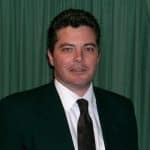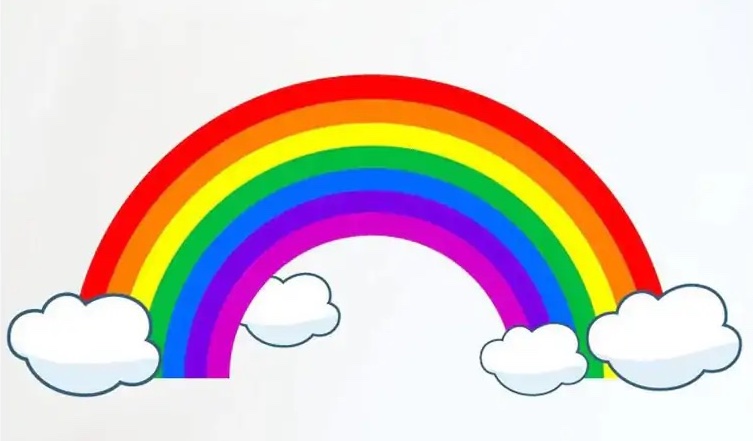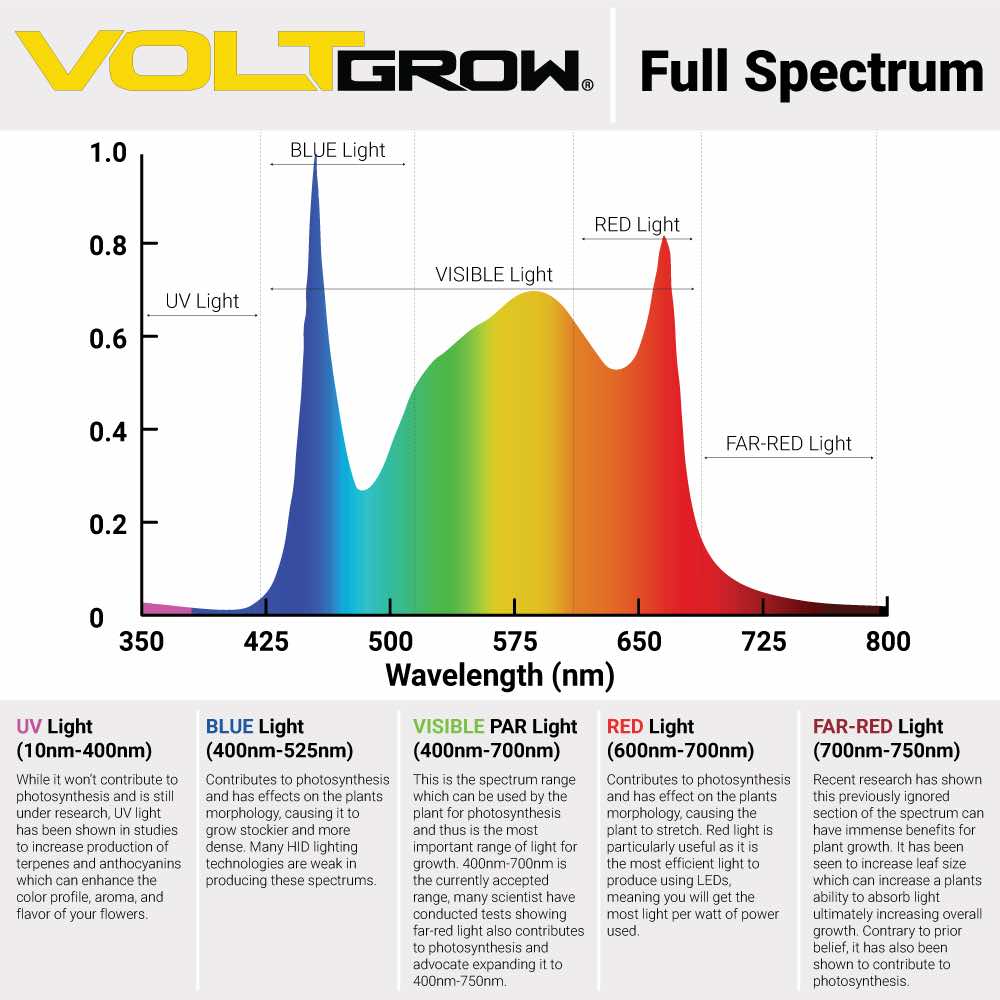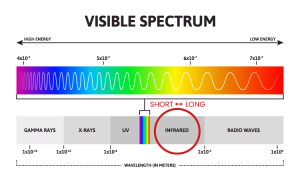A Full Spectrum of Light.
- Why are some lights pink/purple and some not?
- How do IR heaters affect the light spectrum?
A full Spectrum of Light.
- The full spectrum of light comprises visible, near infra red (NIR) and Ultra Violet (UV) light.
- Visible light, has a wavelength of 400 to 700 nm and accounts for 43% of the energy in the global solar irradiance spectrum (300 to 2500 nm).
- NIR accounts for 52% and has a wavelength of 700 to 2500 nm.
- UV Light comprises 5% of this spectrum, and has a wavelength of 300 to 400 nm.1Levinson, R., Berdahl, P., & Akbari, H. (2005b). Solar spectral optical properties of pigments– part II: survey of common colorants. Solar Energy Materials and Solar Cells, 89(4), 351- 389.
- Blue light is in the range of 400-500 nm.
- Green light is between 500-600 nm.
- Red light is between 500-600 nm.
- The time of year.
- The amount of cloud cover and
- The angle of the sun.2Dudeck, A.E. & Peacock, C.H. 1992 Shade and turfgrass culture, p. 269–284 In: D.V. Waddington, R.N. Carrow, and R.C. Shearman (eds.) Turfgrass. ASA Monogr. 32. ASA, CSSA, and SSSA, Madison, WI
Pigments.
Excess UV light causes significant damage to turf grass in only a short period of time.4Ervin, E. H., Zhang, X., & Fike, J. H. (2004) Ultraviolet-B radiation damage on Kentucky bluegrass. I. Antioxidant and colorant effects. HortScience, 39(6), 1465-1470.
To reduce this damage you can simply a apply synthetic green pigment to turf. This increases the visual quality and also the photochemical efficiency of the turf.
What is a Full Spectrum Turf Grow Light?
A full spectrum turf grow light provides the pefect mix of light that turf needs to fully photosynthesise and recover from wear in shade areas. If you use full spectrum grow lights you are able to grow turf grass from seedlings to full maturity.
Blue light.
Red light.
Questions
If I have an infrared heater won’t it throw the light spectrum out?
This is an interesting question. In order to answer it you have to realise that infrared light is further to the right of the visible light spectrum that turfgrass generally uses but that Infrared waves can also affect how plants grow.
An “infrared heater” converts electricity into light and heat as well as emits infrared light.
Turfgrass cannot make use of infrared light for photosynthesis because they lack a pigment which can utilise light with that wavelength.
Plants grown in light that is too red may seem spindly and long-stemmed. Too much infrared light, especially in the far red end of the spectrum, may actually damage plants.
Can red light help fight disease?
There is evidence suggesting that exposing plants to red light increases levels of salicylic acid (SA) and induces SA signalling which is vital for plants to survive fungal infections. That’s all well and good but doesn’t mean you should bombard your turfgrass with red light unless you want it to etiolate. In response to too much red light, it will just make your turf stretch and bleach.
As we keep mentioning a wide LED light spectrum is best which includes red and blue (plus others). If you’re concerned about increasing salicylic acid levels you can make exogenous applications using Vertmax Duo turf pigment which already contains this within its proprietary formulation. That way you increase SA levels get an instant green colouring and avoid your turf becoming like straw!
Does turfgrass mainly use red light?
Contrary to what some say turfgrass uses both red and blue light. Turfgrass gets the hots mainly for blue and red wavelengths. LED grow lighting that only has those colours will not seem very bright but it will be quite effective for grass growth.
References

Jerry Spencer
Graduated from Newcastle University with an Hons Degree in Soil Science in 1988, Jerry then worked for the Sports Turf Research Institute (STRI) as a turf agronomist before emigrating to Australia in 1993.
He followed this by gaining a Grad Dip in Business Management from UTS. He has worked in a number of management roles for companies as diverse as Samsung Australia, Arthur Yates and Paton Fertilizers.
He has always had a strong affinity with the Australian sports turf industry and as a result he established Gilba Solutions as an independent sports turf consultancy in 1993. Jerry has written over 100 articles and two books on a wide range of topics such as Turf Pesticides and Nutrition which have been published in Australia and overseas.




